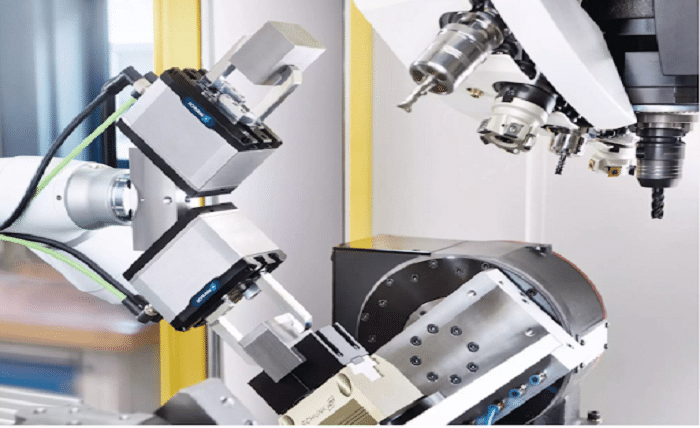The Technology Transfer Office (TTO) plays a crucial role in bridging the gap between academia and industry, particularly in the realm of collaborative research. Understanding the main function of a Technology Transfer Office to collaborative research is essential for appreciating how innovation moves from the lab to the marketplace. This guide will delve into the various roles and benefits of TTOs in fostering successful research collaborations.
What is a Technology Transfer Office?
A Technology Transfer Office (TTO) is an organization within a research institution, such as a university, responsible for managing the institution’s intellectual property (IP) and facilitating the commercialization of research outcomes. Understanding what a TTO is helps clarify its importance in collaborative research endeavors. TTOs play a vital role in ensuring that discoveries and inventions are protected and utilized effectively.
The Main Function of a Technology Transfer Office
The main function of a Technology Transfer Office in collaborative research is to manage and commercialize the intellectual property generated from research activities. This involves identifying potential IP, securing patents, and negotiating licenses. By focusing on this function, TTOs help translate academic research into marketable products and services. Understanding this primary role is key to appreciating the impact of TTOs on innovation and economic growth.
Facilitating Innovation and Collaboration
TTOs play a crucial role in facilitating innovation by promoting collaboration between researchers and industry partners. They help identify research with commercial potential and connect researchers with companies that can develop and market their innovations. Facilitating innovation and collaboration is a core function of TTOs, enabling the successful transfer of technology from academia to industry.
Managing Intellectual Property
One of the critical responsibilities of a TTO is managing intellectual property. This includes identifying patentable inventions, securing patents, and maintaining IP portfolios. Effective IP management ensures that research outcomes are protected and can be commercialized. By managing intellectual property, TTOs safeguard the interests of researchers and their institutions, while also promoting economic development.
Licensing and Commercialization
Licensing and commercialization are central to the work of a TTO. TTOs negotiate licenses with companies interested in using academic inventions, ensuring that the terms are favorable for the institution and the researchers. Through licensing, TTOs enable the commercialization of research, turning academic discoveries into products and services that benefit society. Understanding the role of licensing highlights the economic and social impact of TTOs.
Fostering Industry Partnerships
TTOs foster partnerships between academia and industry by facilitating collaborative research agreements, sponsored research projects, and consulting arrangements. These partnerships provide researchers with additional funding and resources, while giving industry access to cutting-edge research. Fostering industry partnerships is a key function of TTOs, promoting mutual benefits for both academia and industry.
Supporting Startups and Spin-offs
Many TTOs support the creation of startups and spin-off companies based on academic research. They provide resources and guidance to researchers interested in commercializing their inventions through new ventures. By supporting startups and spin-offs, TTOs contribute to economic growth and job creation. This support is crucial for translating innovative research into viable businesses.
Navigating Legal and Regulatory Issues
TTOs play a vital role in navigating the complex legal and regulatory issues associated with technology transfer and commercialization. They ensure that all agreements comply with relevant laws and regulations, protecting the interests of the institution and its researchers. Navigating legal and regulatory issues is essential for the smooth operation of collaborative research projects and the successful transfer of technology.
Providing Training and Resources
TTOs provide training and resources to researchers to help them understand the commercialization process and the importance of IP management. This includes workshops, seminars, and one-on-one consultations. Providing training and resources empowers researchers to engage more effectively in technology transfer activities. It also enhances the overall innovation ecosystem within the institution.
Measuring the Impact of Technology Transfer
Measuring the impact of technology transfer activities is important for assessing the effectiveness of TTOs. This involves tracking metrics such as the number of patents filed, licenses executed, and startups created. By measuring impact, TTOs can demonstrate their value to the institution and secure ongoing support for their activities. Understanding the metrics used to measure impact highlights the contributions of TTOs to research and innovation.
Conclusion
The Technology Transfer Office plays a vital role in collaborative research by managing intellectual property, facilitating innovation, fostering industry partnerships, and supporting commercialization efforts. By understanding the main function of a Technology Transfer Office to collaborative research, we can appreciate the significant impact these offices have on advancing science and technology. TTOs not only protect and promote academic research but also contribute to economic growth and societal well-being.
FAQ
1. What is a Technology Transfer Office (TTO)?
A Technology Transfer Office (TTO) is an organization within a research institution that manages intellectual property and facilitates the commercialization of research outcomes.
2. What is the main function of a TTO in collaborative research?
The main function of a TTO in collaborative research is to manage and commercialize intellectual property, ensuring that research discoveries are protected and utilized effectively.
3. How do TTOs facilitate innovation and collaboration?
TTOs facilitate innovation and collaboration by connecting researchers with industry partners, promoting the commercialization of academic research, and supporting startups and spin-offs.
4. What role do TTOs play in managing intellectual property?
TTOs manage intellectual property by identifying patentable inventions, securing patents, and maintaining IP portfolios to protect and commercialize research outcomes.
5. How do TTOs support startups and spin-offs?
TTOs support startups and spin-offs by providing resources, guidance, and assistance to researchers interested in commercializing their inventions through new ventures.





